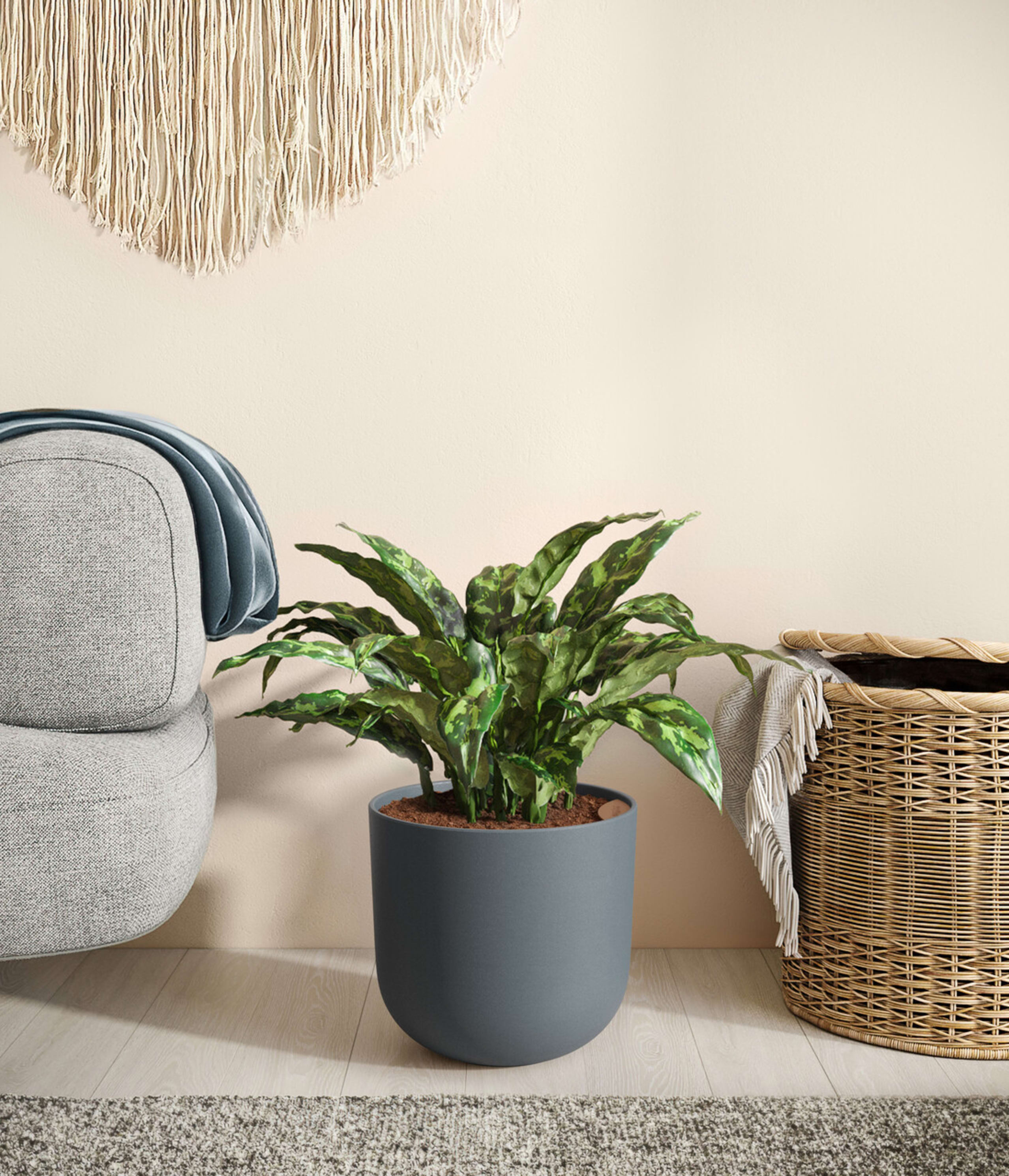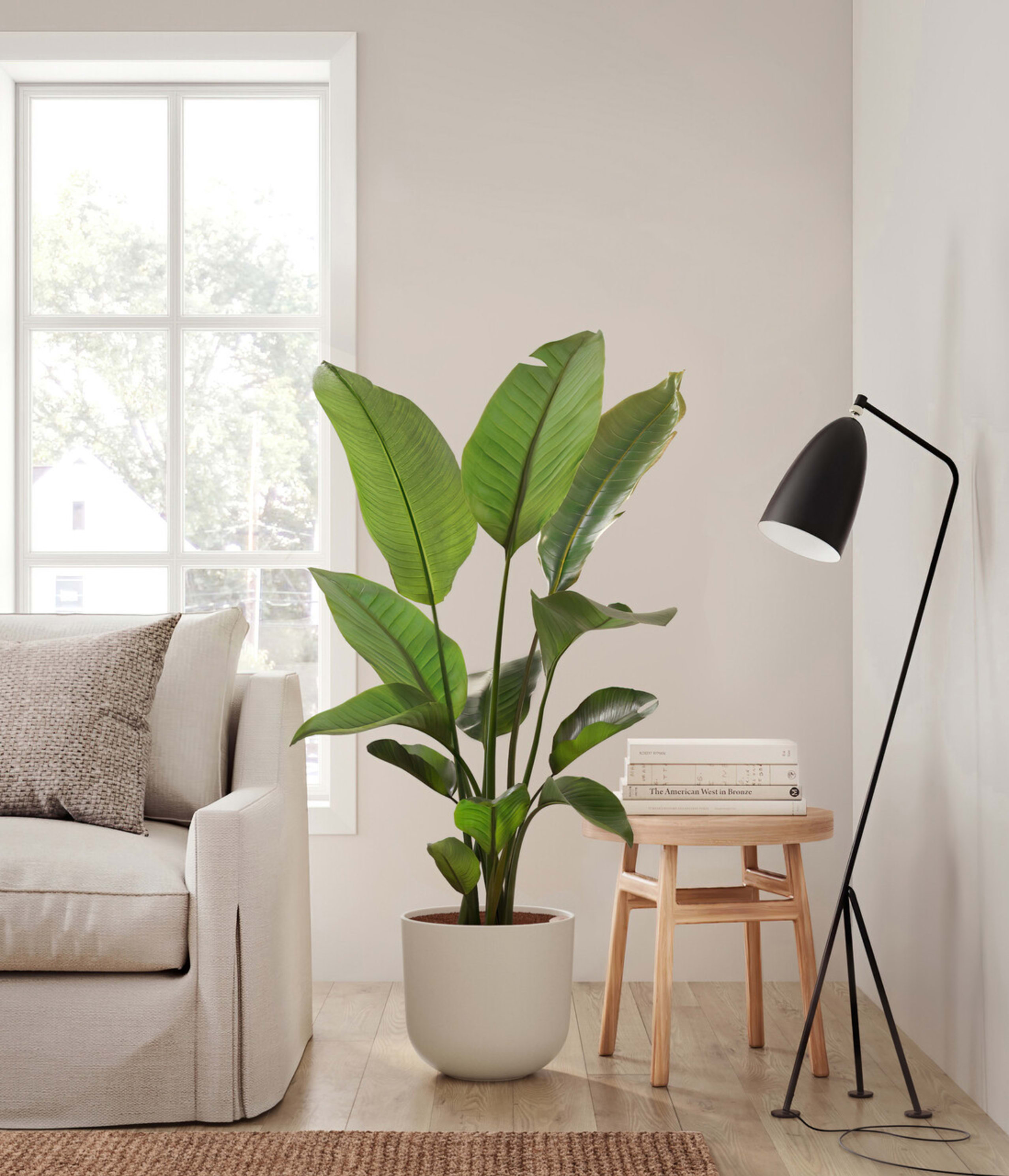You might also like
Rubber Tree
Self Watering, Longer Living
$149
Or 4 payments of $37.25 with
Learn moreStand: None
Self-Watering Planter
90-Day Guarantee
Free Shipping Included
Rubber Tree at a Glance
Water once a month with

30"-40" tall (including pot)
Can grow up to 10 ft. tall indoors
Place it near the living room sofa for a cozy green spot
Shipping Options
Rubber Tree Bio
Native to Southeast Asia, the tropical Rubber Tree, also known as Ficus Burgundy, loves warmth and sun. In Feng Shui, its round-shaped leaves are known to soften up the space, and it is believed to bring good fortune and wealth. Historically, its milky white sap was used by ancient civilizations to produce rubber. With its great size and inherent ability to purify the air from common household toxins, Rubber Tree makes a perfect indoor plant loved for its ease of growing.
Light Instructions
Rubber Tree grows best in a space with bright direct light, where the sunlight streams inside directly, and can also adapt to spaces with bright indirect light, where the sun rays are diffused. Avoid placing it in spaces with low light or spaces without natural sunlight.
How does self-watering work?
- 1Simply open the lid and fill with water
- 2Your plant drinks only when needed
- 3The result: healthy, long-lived plants that are easy to maintain
easyplant benefits
- Carefree and convenient
- Never worry about when to water
- Much healthier plants that live longer
- We use proven Waterwick TM technology to optimize water consumption
| Advantages | Other | |
|---|---|---|
| Water every | 1 Month | 1 Week |
| Overwatering | Rare | Common |
| Underwatering | Never | Common |
| Over compacted dry soil | Never | Common |
| Easily know when to water | ||
| Stable root growth |
Rubber Tree Care
During your Rubber Tree's first few days at home, it will be extra sensitive and might lose several leaves. You may let them fall out on their own or cut them; no need to worry - newly adjusted leaves will take their place soon.
For the best adjustment, avoid moving the pot around the house too much and allow it to acclimate to one location. To help it grow optimally and evenly, occasionally dust the leaves and rotate the pot by a ¼ turn once a month. To maintain its aesthetic shape and height, you may periodically prune it to your liking.
Frequently Asked Questions
Do rubber trees actually make rubber?
Yes, Rubber Trees can produce low-grade rubber. Natural rubber comes from latex, a compound that can be found in the sap of the Rubber Tree. The latex is extracted in a process called rubber tapping.
How Toxic are Rubber Trees?
Rubber trees are classified as Class 4 on the toxicity scale, the mildest classification. Still, the plant should never be ingested, so keep it away from children and pets. If contact is made with the sap containing latex, wash it off immediately. If you have a known latex allergy, contact your doctor.






 small
small medium
medium collections
collections large
large huge
huge